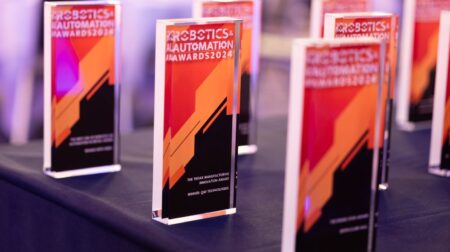Researchers from Cambridge University have developed a 3D-printed, low-cost, energy-efficient robotic hand, which they claim is capable of grasping a range of objects without dropping them.
The soft robotic hand works by using the movement of its wrist and sensation picked up on through tactile sensors placed on its ‘skin’.
Despite the fact it cannot independently move its fingers, it can still perform a range of complex movements, according to its developers.
The hand was trained to grasp different objects and predict when it would drop them through use of the sensors. The research team suggest his type of passive movement makes the robot easier to control and more energy-efficient than robots with fully motorised fingers.
The results of the study were published in the journal Advanced Intelligent Systems.
In recent years, soft components have started to be integrated into robotics design due to improvements in 3D printing, which have allowed researchers to add more complex components to simple systems.
As the human hand is highly complex, recreating all of its dexterity and adaptability in a robot is a massive challenge, with most of today’s advanced robots unable to complete simple manipulation tasks that small children can perform with ease.
In addition, a fully actuated robot hand, with motors for each joint in every finger, uses up a significant amount of energy.
“In earlier experiments, our lab has shown that it’s possible to get a significant range of motion in a robot hand just by moving the wrist,” said study co-author Dr Thomas George-Thuruthel.
“We wanted to see whether a robot hand based on passive movement could not only grasp objects, but would be able to predict whether it was going to drop the objects or not, and adapt accordingly.”
The team reportedly carried out more than 1,200 tests with the robot hand, observing its ability to grasp small objects without dropping them. It was initially trained using small 3D-printed plastic balls, grasping them using a predefined action, as observed through human demonstrations.
“This kind of hand has a bit of springiness to it: it can pick things up by itself without any actuation of the fingers,” said Dr Kieran Gilday, first author of the project.
“The tactile sensors give the robot a sense of how well the grip is going, so it knows when it’s starting to slip. This helps it to predict when things will fail.”
From there, the robot used trial and error to learn the required grip and force. After finishing the training using balls, then hand then attempted to grasp objects such as a peach, a computer mouse and a roll of bubble wrap.
In this round of testing, the hand was able to grasp 11 of 14 objects using appropriate force.
The researchers suggested the technology could be expanded on in the future, with additions such as computer vision capabilities, or teaching the robot to exploit its surroundings, which would enable it to grip a broader range of objects.







